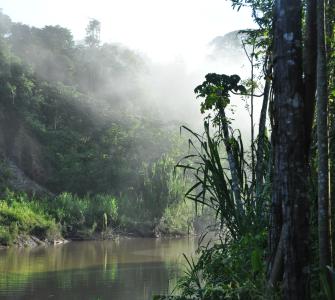Peru is considered one of the ten most megadiverse countries in the world, ranking first in the world for its biodiversity of butterflies and fish, third for birds, fourth for amphibians, fifth for mammals and reptiles, eighth for plants, and is home to 10% of the total number of orchid species on the planet. Peru’s great biological diversity is well-represented in its Natural Protected Areas (NPAs), making them a cornerstone of Peru's rich natural heritage and a vital component for the nation’s sustainable development.
Since 2021, the World Bank has been collaborating with the two main agencies working on forestry matters - the Natural Protected Areas National Service of the State (SERNANP) and the National Forestry and Wildlife Service (SERFOR) - on possible investments to improve the management of protected areas and forests to address both climate change and economic development needs.
To support this work, Conservation Strategy Fund (CSF) carried out a study to determine the contribution of the landscape resources and the renewable resources of the NPAs to economic development on national scale, as well as the benefits that come from carbon sequestration and the provision of water from NPAs to human well-being. The purpose of this study is to further support new investments, both nationally and internationally, in NPAs.
Our study “Contribution of Natural Protected Areas to the National Economy and Human Well-being” focused on three aspects:
Identify investments in NPAs that increase their tourism potential and estimate the economic impact of these investments on the national economy.
Estimate the current and potential economic contribution of the following activities in NPAs to the national economy: tourism activities, the use of forest, flora, and wildlife resources through small-scale commercialization, REDD+ (Reduction of Emissions from Deforestation and Forest Degradation) projects, and MERESE (Ecosystem Services Payment Mechanisms) water-related projects.
Determine the economic impact of increased public investments in tourism activities and tourism concessions in the NPAs.
Results demonstrated the role of NPAs to the Peruvian economy and human well-being, and provided SERNANP with evidence to improve the management of protected natural areas and contribute to the country's conservation objectives.
This analytical work is made possible by the support of the World Bank ProGreen Fund project entitled "Peru Resilient Landscapes Management", in collaboration with SERNANP.
Photo credit: Mike Treglia/Shutterstock.com

